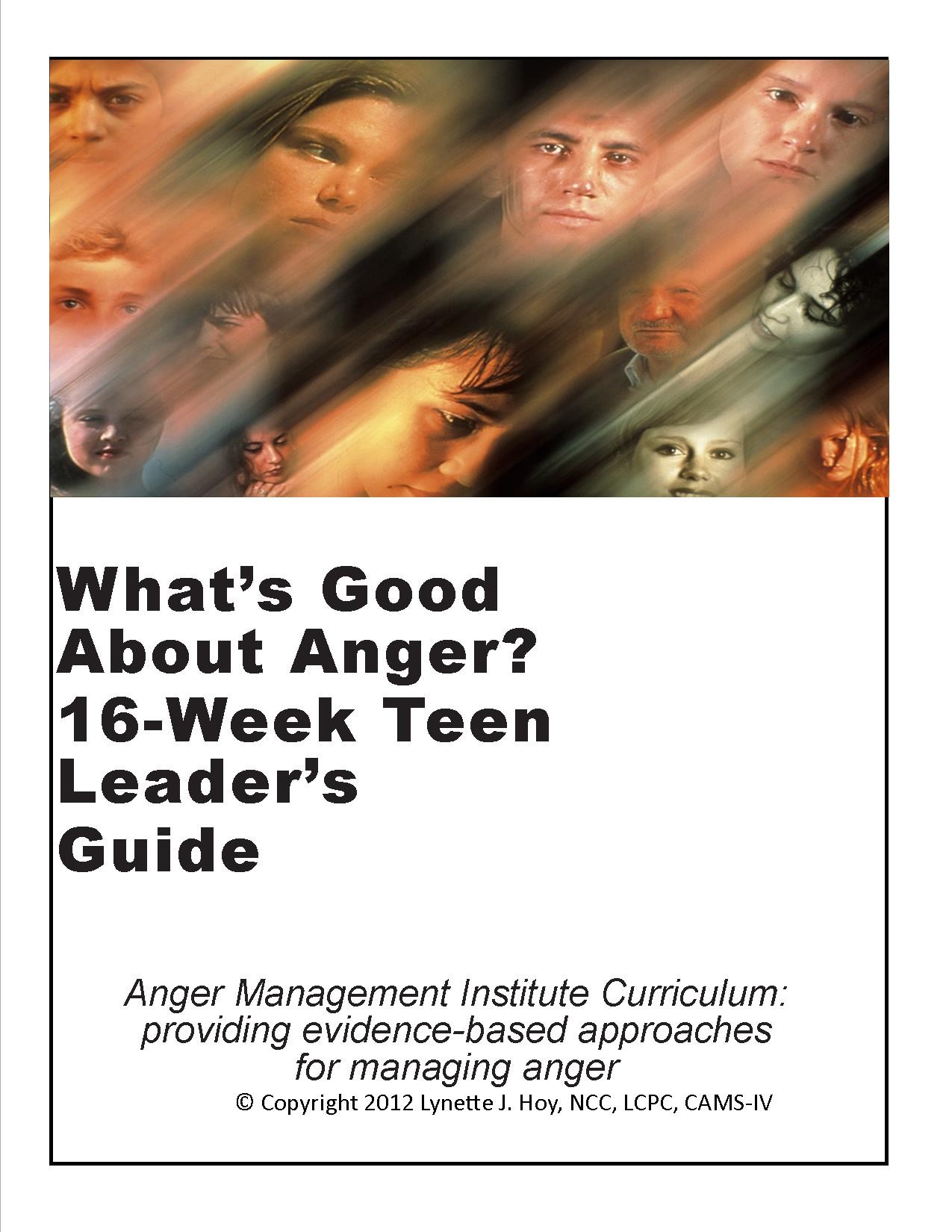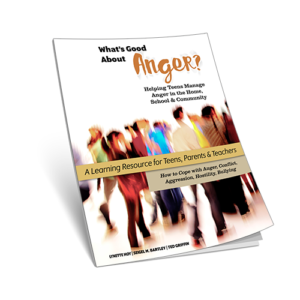Do you want to lead anger management classes or groups for adolescents? You can teach effective skills to help teens control their anger by transforming it into assertiveness, problem-solving, constructive behaviors, empathy and forgiveness!
Includes:Resources based on the 16 lesson What’s Good About Anger? Second Edition book/workbook for teens! and includes:
16 week Adolescent Leader’s Guide; New teen power point presentation on CD with group discussion & activities!;
Video on flash drive (65 min) with candid interviews of college students; 12 (16 lesson) What’s Good About Anger? Expanded book/workbooks, pre and post-test evaluation and progress tools; enrollment and certificate of completion templates.
- New What’s Good About Anger? Expanded Book & Workbook for Teens, Video on flash drive (65 min) with candid interviews of college students, real life scenarios for application of skills geared specifically for adolescents!
Overview and Instructions
16 Lessons:
- Anger Survey
- Anger’s Many Faces
- The Power of Anger
- What is Good about Anger?
- Defusing Anger by Managing Stress
- Handling Anger Effectively
- Anger and Assertiveness
- Managing Conflict
- Turn Your Anger into Forgiveness
- When to Take a Break
- Plan to Change Your Life by Changing Your Thinking
- How Emotional Intelligence Impacts Anger
- Building Healthy and Successful Relationships
- Choosing Behavior Alternatives
- Defusing Anger and Hostility. Dealing with Bullying
- Accepting Responsibility for Unhealthy Anger
- Facing the Consequences of and Interrupting Aggression
Inventories in Book:
- Anger Management Progress Report
- Anger Survey
- Assertiveness Inventory
- Empathy Inventory
Here’s a sample of Session One from the Leader’s Guide:
What’s Good About Anger? Leader’s Guide for Adolescent Classes and Groups (Materials to be used: What’s Good About Anger? Expanded Book/workbook for Teens, DVD and power point tools;
SESSION ONE: Anger: friend or foe? Introduction to the problem and types of anger.
Goal: To define anger, how it affects people and relationships. To begin to explore triggers for anger and foundational teachings about anger.
Session Plan:
Welcome participants and introduce yourself. Have the members of the group introduce themselves.
Present Rationale: Explain the purpose of learning anger management: To increase self-control (control over own behavior/thoughts). To handle anger, conflict and provocation effectively and appropriately.
The What’s Good About Anger? anger management course and group employs the these major areas and anger control interventions:
• Understanding the dynamics and types of anger,
• Identifying triggers and underlying causes,
• Identifying the consequences of anger,
• Logging scenarios,
• Applying new skills such as: time-outs, prayer,
• Addressing issues with assertiveness,
• Establishing a plan of action,
• Learning to problem-solve,
• Getting guidance from a counselor, coach or mentor when needed,
• Changing self-talk and cognitive distortions,
• Turning anger into forgiveness,
• Stress management skills,
• Conflict management skills,
• Emotional Intelligence insights and application
Introduction and Support Group Guidelines: Review pages in the book covering the introduction, assignments, and Support Group Guidelines.
Read the foreword found in the book.
Attention Grabber: Share the statistics about anger and violence in teens found in this manual and a recent incident of anger (Brittany Spears) in the news media. Ask what concerns you about these statistics and this incident?
Introductory Questions: What brought you to the group? What do you hope to learn?
What pictures or words come to mind when you think of anger?
How would you define anger?
Anger Trap: What’s yours?
Survey: Provide some time to complete a portion of the survey in the book or workbook. Ask participants to total their scores.
Present and teach Chapter Two: Anger’s Many Faces.
Anger, though potentially harmful, can be transformed into a positive force accomplishing great good in our lives. Ted Griffin and Lynette Hoy
Teaching points and insights for youth:
The first session is critical to helping students gain an overview and understanding of the emotion of anger- what it is, that it is normal, often harmful but, can be expressed in healthy ways.
Many participants may be court or school-ordered to take the class or sessions so, it is important to try to win them over helping them to accept the classes and see that they can benefit from the information and curriculum.
How can you win these students over?
Make it interesting: Start out with presenting everyday examples of anger – yours, class members, examples from society, news, blogs, media and the book.
Treat them with respect and dignity: Demonstrate and role-model respect for and interest in each student.
Encourage participation: Have participants take a portion of the survey and share the results with the group.





